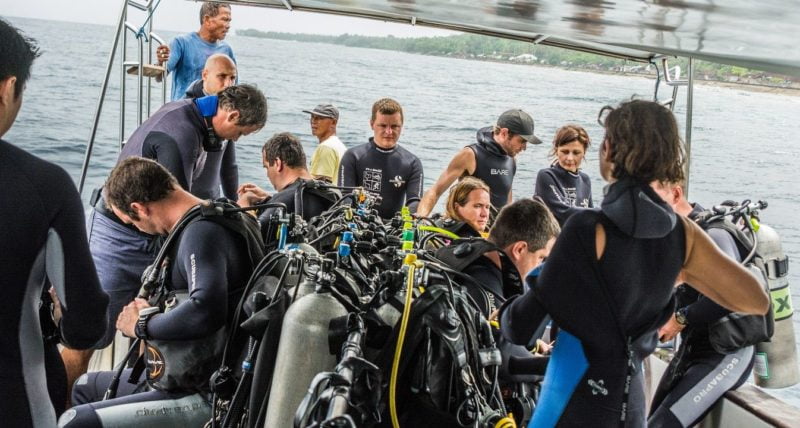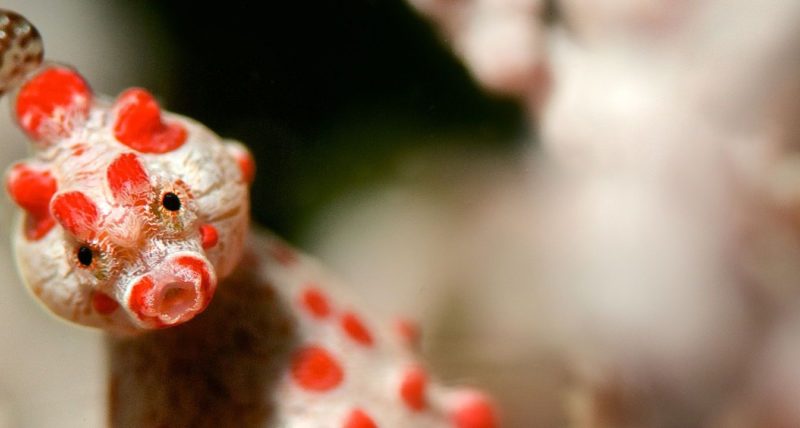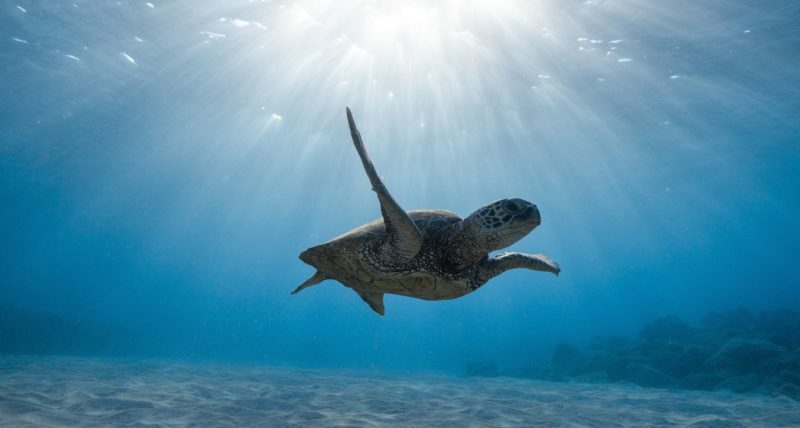Diving in Bali – Harlequin Shrimp
Harlequin Shrimp interesting facts
One of the most colorful and ornate residents of Bali dive sites is the notorious harlequin shrimp. Whether you are a diving professional, underwater photographer or just a beginner, encounter with these interesting small creatures will make you wonder if they are even real. Even though they might seem very cute and innocent, the truth is that these vividly hued animals are fierce hunters, and no starfish is safe around them.
The colourful Harlequin shrimp of Bali
Here are some interesting facts about our favorite underwater clowns, and practical information on where to find them during your diving trip in Bali and how to take a perfect picture of them, so you better have your macro lens ready.
Beautiful clowns
They are species of saltwater shrimp found at coral reefs in the tropical waters of Indian and Pacific oceans. The ones you can observe during your dives in Bali are known as Hymenocera elegans and easy to recognize thanks to their signature brownish spots framed by blue edges. In the animal kingdom, flamboyant looks usually mean that the creature is either poisonous or dangerous, but this is not the case of harlequin shrimp. These smart animals are using their colorful costumes to trick the eyes of predators, making them think that harlequins are full of toxins. This is generally not true, even though there might be some toxic particles absorbed into their bodies from their food. As a result, fishes stay away from them, allowing shrimps to freely hunt along the reef. These underwater beauties are rather small, measuring only up to 5 centimeters, with females being generally larger than males. Their eyes are on stalks, and you will also notice two flat paddle-like claws that seem to be in constant motion and are used as snipping tools for shredding their prey.
Fierce hunters
Harlequin shrimps have a very particular diet, and feed exclusively on starfish, including the famous crown-of-thorns. These animals are up for any challenge and often attack a starfish that is 100 times their own weight and size. Shrimps locate their prey by its smell, using the receptors on their heads. Firstly, they flip starfish over with their claws and then use their special feeding limbs to break their bodies and start munching on the tube and soft tissues. Since starfish are way larger than harlequin shrimps, this process can take several days to weeks, so they drag the starfish to a safe dining spot, usually protected by rocks or corals, and starfish is then being eaten alive. Surprisingly, shrimps sometimes shred an arm of starfish which later regrows and harlequins then re-eat it again. There have been also cases when they provided food for starfish and thus kept it alive for their later consumption. Interestingly, harlequin shrimps are team players and hunt in couples.
Faithful lover
These animals form monogamous relationships and they stay together for a lifetime. Once they find their perfect home on the reef, they are known to stick around this area for several months and even years and become boldly protective of their territory. These shrimps reproduce after female molts and usually lay between 100 to 5,000 eggs per breeding season. Couples take good care of their offspring and clean the eggs until they hatch. Then they are released into current and go through several larval stages until they reach adulthood. Even though the number of eggs seems to be quite large, the recent demand for harlequin shrimp in the aquarium trade as well as bleaching of coral reefs made them very vulnerable.
Bali dive sites with harlequin shrimp
There are numerous Bali dive sites where you might be lucky enough to spot harlequin shrimp while diving in Bali. There are chances to observe them in Padangbai, on famous locations in Amed such as Seraya secret and Melasti or even in Tulamben. Harlequin shrimps live on coral reefs and usually seek shelter under large rocks or in crevices during the day and if you look for starfish, you might see them munching on it. When planning your dive with harlequin shrimps, you should consider a well-established dive center with experienced guides that have throughout knowledge of dive sites in Bali and can locate these little beauties. OK Divers diving resort in Bali have a long tradition in guiding countless divers and underwater photographers on their muck and macro dives and will gladly do the service for you.
How to photograph harlequin shrimp in Bali
In any case, you should respect their behavior and not harass them just to get your perfect picture. If they are not in the right position, you can try it later on a dive. Never chase or touch the shrimp as you might injure it, so instead, maintain your buoyancy and approach it very slowly. When taking a picture, keep in mind that harlequin shrimps are white and thus can be easily overexposed. If you are using manual mode, you can try bracketing technique, meaning that you take several pictures with different camera settings to ensure that you have exposed it correctly. Strobes or camera’s internal flash can help you with creating more contrasting pictures with shadows and vivid colors, so you will get the best out of these beautiful animals. However, try reducing their power and put on the light diffusers to have softer and more even lighting. You can play with different angles and compositions, but the focus should be on their head and/or claws to have the most appealing result. If you would like to meet the harlequin shrimp face to face and take your new favorite underwater picture, do not hesitate to contact OK Divers in Padangbai and try our private guide for underwater photographer, and we will take you on some awesome Bali adventure with these interesting creatures.



